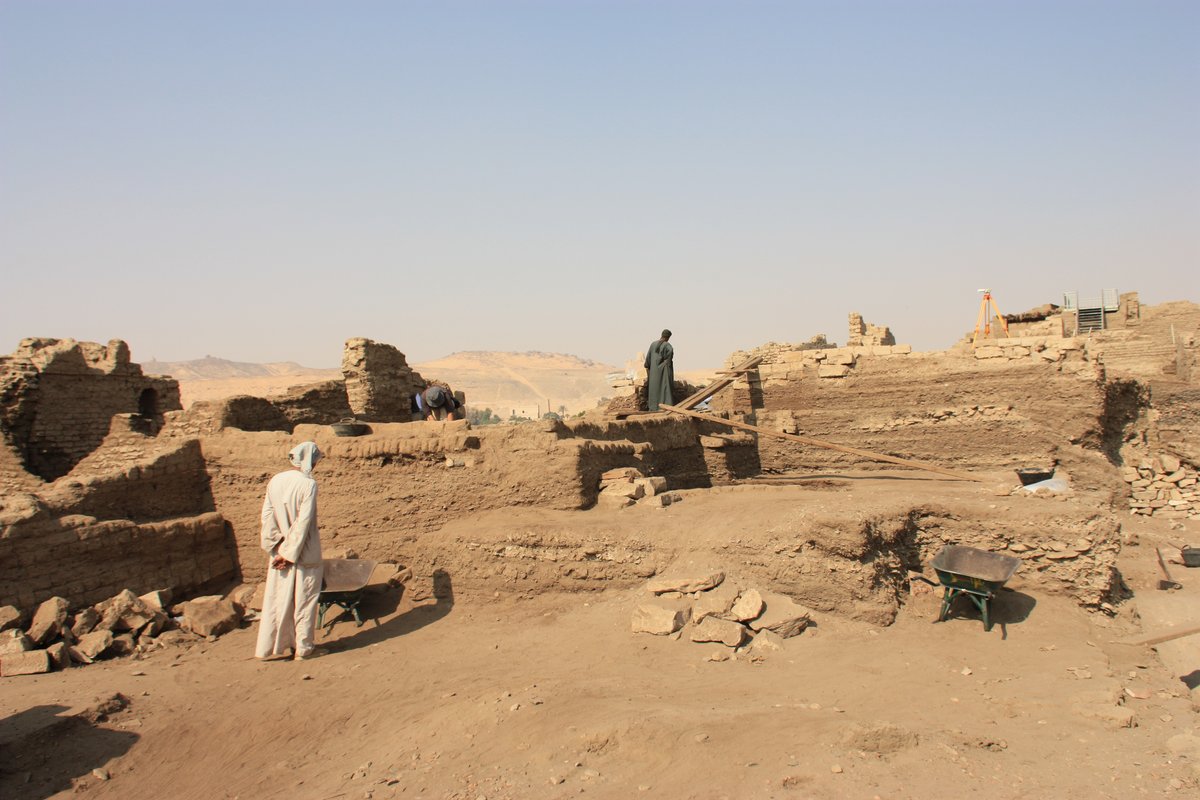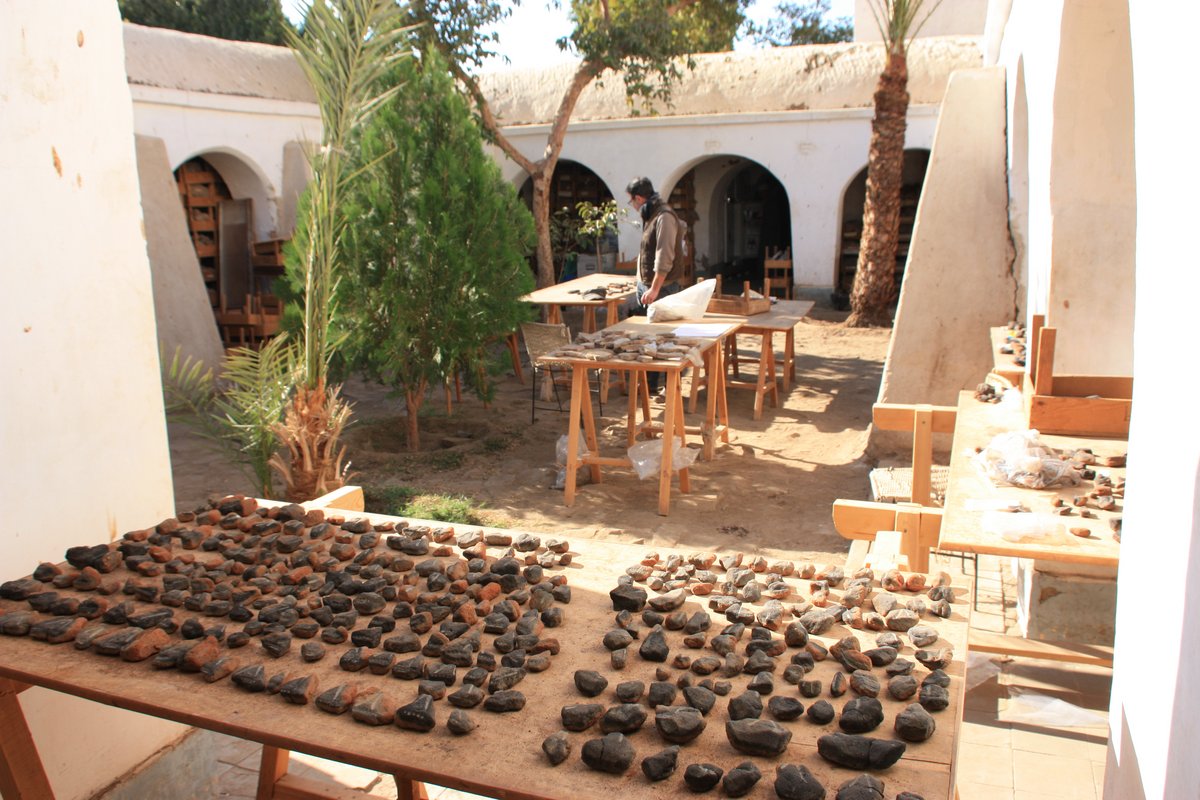The Early Byzantine non-ferrous metal workshop on Elephantine
The Nile island of Elephantine near Aswan has been inhabited since predynastic times and later gained supraregional importance through the construction of temples to the gods Satet and Chnum. Excavations have been carried out there since 1969 by the German Archaeological Institute, Cairo Department, in cooperation with the Swiss Institute for Egyptian Building Research and Archaeology. In recent decades, the Swiss Institute has devoted itself to the post-antique, i.e. Byzantine and Islamic monuments and layers. Around the temple of Chnum, which had not been used as such since the 4th century AD, a residential district was established, in the surroundings and forecourts of which numerous remains of craft and trade production were discovered. As part of a research cooperation, the LEIZA is investigating a production workshop of the 5th and 6th centuries AD in which non-ferrous metal was processed. Two furnace remains and, above all, several thousand fragments of casting moulds - casting was carried out using the lost-wax process - as well as remains of casting crucibles and slags can be attributed to the workshop, providing evidence of the bronze casters' activities.
Egypt was famous for its non-ferrous metal products in Late Antiquity and the early Byzantine period. The diverse range includes basins and handle bowls, lamps and incense burners, pendants and jewellery. With the workshop remains at Elephantine, a production site has now been archaeologically recorded for the first time. A number of questions now need to be asked about these findings: What techniques were used to produce the cast non-ferrous metal objects? What range of production can be traced? Where did the craftsmen obtain their raw materials? How extensive was the production and how long did the workshop exist? The aim is thus to reconstruct the production process (chaîne opératoire) and thus also to contribute to research into the small-town economy of an early Byzantine settlement in Coptic Egypt.
In addition to the archaeological processing of the workshop finds, an analysis of the copper alloys used will also be carried out. For this purpose, a scientific investigation of the metal remains found on the cast iron crucibles has already been carried out.
- Copy link
- Print article
Contact
- Dr. Jörg Drauschke
- +49 6131 8885-163
- Kontakt
Project Period
- Since 01.2011
- J. Drauschke, Ein Hahn von der "Elefanteninsel". In: J. Drauschke/ E. Kislinger/ K. Kühtreiber/ T. Kühtreiber/ G. Scharrer-Liška/ T. Vida (Hrsg.), Lebenswelten zwischen Archäologie und Geschichte. Festschrift für Falko Daim zu seinem 65. Geburtstag. Teil 2. (Mainz 2018) 655-670.
- J. Drauschke, Die Produktion von Buntmetallgefäßen im spätantiken Ägypten. In: Schallaburg Kulturbetriebsges.m.b.H. (Hrsg.), Byzanz & der Westen. 1000 vergessene Jahre. Ausstellungskatalog Schallaburg 2018 (Schallaburg 2018) 123 Nr. 92.
- M. Beghelli / J. Drauschke, Suppellettili liturgiche e vasellame in bronzo: tecniche di manifattura e centri produttivi. In: M. Beghelli / M. De Marchi (Hrsg.), I maestri del metallo. L'intelligenza nelle mani. L'Alto Medioevo. Artigiani, techniche, produttive e organizzazione manifatturiera 2 (Roma 2017) 43-71.
- J. Drauschke, Buntmetallproduktion. In: St. Seidlmayer/F. Arnold/J. Drauschke/P. Kopp/C. v. Pilgrim/St. Wefers, Stadt und Tempel von Elephantine. 39./40./41. Grabungsbericht. Mitteilungen des Deutschen Archäologischen Instituts, Abteilung Kairo 72, 2016, 223-225.


![[Translate to Englisch:] [Translate to Englisch:]](/fileadmin/_processed_/c/9/csm_Abb_03_Elephantine_013b952797.jpg)
